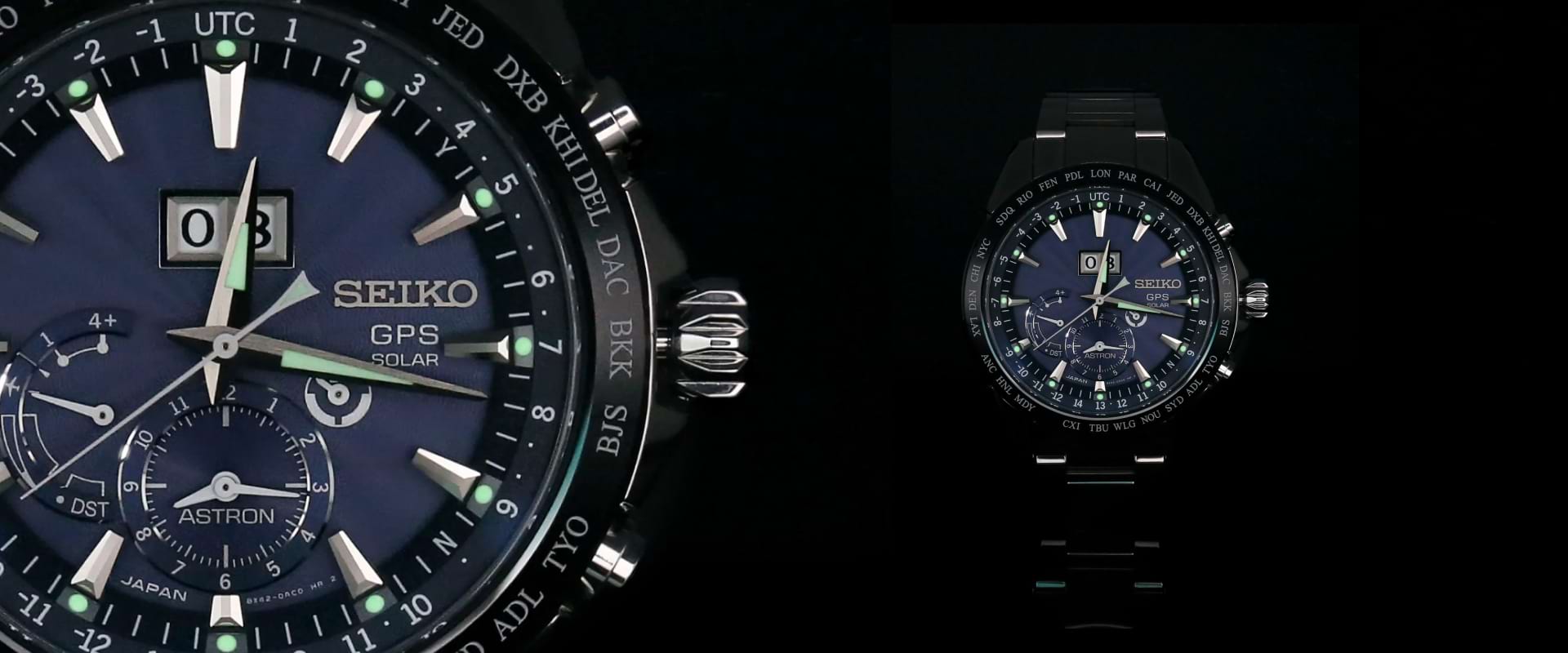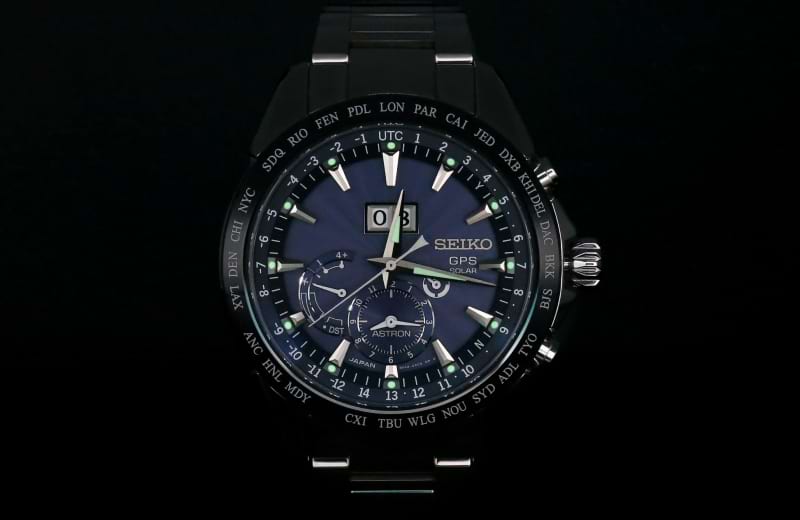How to master black background product photography
In product photography, the choice of background plays a crucial role in highlighting the subject. Black background photography represents a sophisticated choice in drawing the viewer's focus directly on the product. A black or dark grey backdrop offers a striking contrast and depth, unlike lighter backgrounds.
Introduction
Achieving the perfect black background requires a delicate balance of equipment and technique. From selecting the right material, like black velvet or matte-painted MDF boards, to mastering light and post-production. This article delves into the art of black background product photography, providing practical tips to help you shoot compelling product photos.
We will explore the nuances of choosing and lighting black backgrounds, controlling exposure, and refining images in post-production; covering techniques designed to empower photographers to create eye-catching images that highlight products against stylish dark backdrop. Join us as we navigate through the key aspects of this powerful visual style.
- Why black backgrounds elevate product photography
- Choosing the right background material
- Lighting techniques for black background photography
- Camera techniques for capturing rich black tones
- Post-production tips for black backgrounds
- Common challenges and how to overcome them
- Orbitvu's edge in black background photography
- Conclusion
Why black backgrounds elevate product photography
The attractiveness of black backgrounds lies in their ability to create a visual impact. Unlike a white background, which can sometimes wash out details and appear bland, a black backdrop offers a depth that points out the product's features. This is particularly beneficial for items with intricate designs, where every detail needs to stand out.
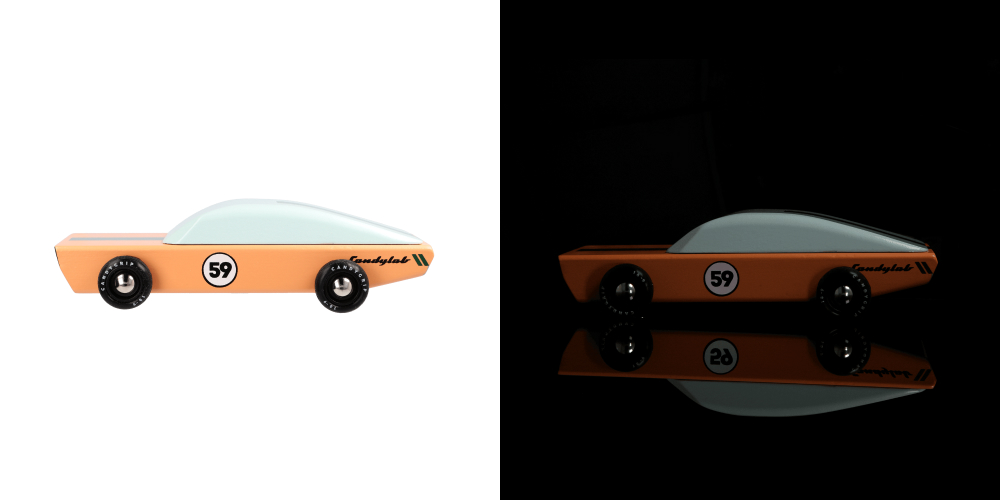
A black or dark grey background provides a dramatic contrast, which is especially effective in highlighting the textures, colors, and shapes of the product, making the images more appealing. It's not just about creating a dark setting; it's about using the darkness to bring more light and attention to the subject.
Moreover, a plain black background contributes to a more controlled lighting environment. They absorb excess light, reducing unwanted reflections and glare that can compromise image quality. This control allows photographers to use advanced lighting techniques such as rim light or spotlights more effectively, achieving unusual effects.
The versatility of black backgrounds also extends to various photography styles. Whether it's a minimalist approach focusing on the product alone or a more complex setup with props and additional elements.
In essence, black backgrounds can give product photography more artistic aesthetics. They provide a canvas that makes the product shine, capturing the viewer's attention and imagination.
Choosing the right background material
Selecting the optimal background material is an important step in creating black background product photography. The choice of material influences how the light interacts with both the subject and the backdrop, affecting the final appearance of the resulting image.

1. Black velvet: A top choice for photographers, black velvet is renowned for its light-absorbing properties. It eliminates reflections and helps achieve a deep, pure black background, making it ideal for creating a strong contrast with the subject.
2. Matte paint MDF boards: These are a practical alternative to fabric. Their rigid structure and matte finish help in controlling light spills and reflections. They are particularly useful for larger setups or when a sturdy background is needed.
3. Paper rolls and foam boards: For a more budget-friendly option, black paper rolls or foam boards can be effective. They are easy to set up and replace, making them suitable for high-volume shoots. However, their light-absorbing capability may not match that of velvet.
4. Customized backdrops: In certain cases, a customized backdrop might be necessary. This could involve painting a wall with matte black paint or creating a specific pattern/design that complements the product.
When working with black backgrounds, it's important to consider the material's reflectivity and how much light it absorbs. A material that is too reflective can bounce light sources and create unwanted highlights on either the background or the product.
In conclusion, the choice of material can make a significant difference in black background photography outcome. It's about finding the right balance between aesthetic appeal, practicality, and budget.
Lighting techniques for black background photography
Lighting is essential in creating quality black background product photography. Proper lighting techniques can highlight details, create mood, and contribute to the overall visual appeal of the product image
1. Rim lighting: A pivotal technique for black backgrounds, rim lighting involves positioning lights behind and slightly to the side of the product. This creates a subtle outline or 'rim' of light, which helps to separate the subject from the background, ensuring it doesn't blend into the darkness.

2. Background light control: To maintain the integrity of a dark background, it's crucial to control the amount of light reaching it. This often means adjusting the direction and intensity of lights to focus more on the product and less on the backdrop. Using snoots or grids can help direct light precisely where it's needed. Black cardboards or foam boards can be used to cast a shadow on the background.
3. Playing with shadows and highlights: Manipulating shadows and highlights can add depth and dimension to product photos. A balance between darker areas and well-lit sections brings out the texture and features of the product. But be careful not to lose detail in too dark shadows or overexposed highlights.
4. Experimenting with light sources: Don't hesitate to experiment with creative light techniques. For example, you can try to use numerous lamps with narrow light beams to sculpt the product, use just one reflector with a honeycomb grid from the top for a dramatic effect, or light the product from the side, leaving one half hidden in the shadow with just an outline created by the rim light, etc.
Camera techniques for capturing rich black tones
Perfecting the black background product photography involves more than just the right backdrop and lighting; it requires specific camera techniques to ensure the richness of the black tones while properly lighting the product.

1. Balancing exposure settings: A black background easily tricks the auto-exposure. Thus manual in-camera setting is recommended. This involves adjusting the aperture for optimal performance in contrast rendition, which is different for each lens, typically around f/8 - f/11. Setting an appropriate shutter speed to allow the proper amount of light on the camera sensor and keeping the ISO low to reduce noise in the darker areas of the photo.
2. Focusing on subject detail: It’s important to ensure the product remains the focal point against the dark background; using a lens with a longer focal length can help isolate the subject from the backdrop.
3. Playing with angles and composition: Experimenting with different shooting angles, such as a low angle or a bird's-eye view, can significantly affect how the black background interacts with the product.
4. Manual Focus for Precision: Auto-focus systems may struggle against dark backgrounds. Switching to manual focus allows for precise control, ensuring the product is sharply defined against the black backdrop.
Post-production tips for black backgrounds
The role of post-production in black background photography is crucial in enhancing and perfecting the final image. Effective editing can turn a good photo into a great one, especially when it comes to fine-tuning the nuances of a dark backdrop.

1. Adjusting contrast and black levels: One of the first steps in post-production is adjusting the contrast and black levels. This helps in deepening the black background without losing detail in the product.
2. Refining edges and highlights: To make the product stand out, it is very effective to selectively brighten parts of the product and darken the edges of the background, enhancing the feeling of depth.
3. Removing unwanted reflections and glare: If there are any unwanted reflections or glare on the product or background, they should be removed in post-production.
4. Color correction: Ensuring accurate color representation is key, especially when photographing products for e-commerce. It’s preferable to use a reference photo of a grey card to adjust the settings to render the true colors of the product.
5. Reframing: Cropping can be used to remove any distractions, improve composition, or adjust the aspect ratio for different platforms.
6. Enhancing texture and detail: Use sharpening tools, and texture and clarity adjustments to bring out fine details of the product.
Common challenges and how to overcome them
While visually striking, black background photography comes with its own set of challenges. Understanding these common issues and knowing how to address them will make it easier to achieve good results
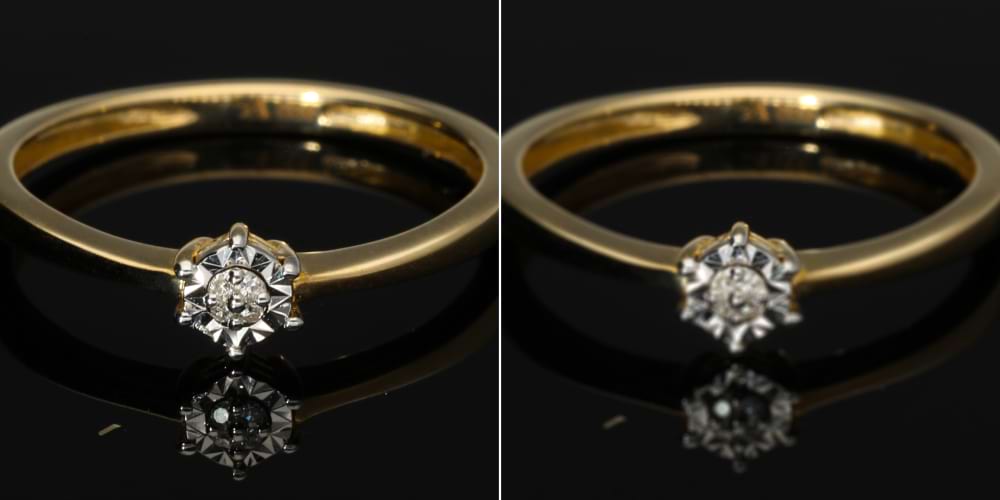
1. Too much light on the background: Preventing light from reaching and illuminating the background can be carried out by using flags or gobos to block unwanted light.
2. Losing detail in dark products: When photographing dark or black products against a black background, it's easy to lose detail. Utilize rim lighting or backlighting techniques to outline the product, ensuring it stands out from the backdrop.
3. Reflective surfaces causing glare: Products with reflective surfaces can create glare against a black backdrop. To mitigate this, adjust the angle of the lights and use diffusers to soften the light, reducing harsh reflections.
4. Uneven background tones: If the background appears uneven or grayish, use post-production tools to adjust the black levels and contrast to achieve a consistent tone.
5. Difficulty in focusing: Auto-focus systems may struggle against dark backgrounds. Switch to manual focus to ensure sharpness where it's needed, or use a temporary light source to focus before taking the shot.
6. Balancing shadows and highlights: Maintaining detail in both shadows and highlights is crucial. Experiment with fill lights and reflectors to fill in shadows without compromising the dark background. Dodge and burn tools can be used in post-production for selective manual adjustments.
Orbitvu's edge in black background photography
Orbitvu's innovative solutions are designed for high productivity and repeatability of consistent results for the needs of e-commerce in various industries, from jewelry to furniture, from flat-lays to live models. On top of the efficiency and quality of product photography, the Orbitvu team praises itself for building tools for creative content production, such as black background product photography.
A 360º spin of a toy on black background
Hardware
Orbitvu supports black background photography in a wide range of its photography automation devices. The smallest is Alphashot Micro Pro v2 with an option to use black turntable and cylindrical segmented lighting and spotlights with adjustable light beam angle. Perfect for electronics, jewelry, and small products. Black plates come in various diameters for a selection of other Orbitvu turntables.
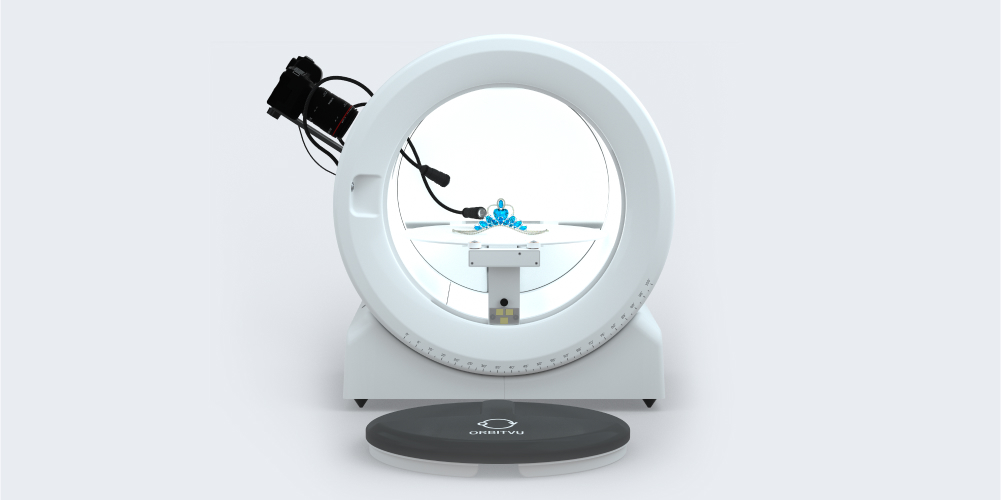
Ultimate devices for creative photography are Fashion Studio and Bike Studio, with integrated holders for 272 cm wide backdrops of any thinkable color. With many individually software-controlled light sections, they make creating black background photography a breeze, including convenient contra lamps for rim lighting.
Software
Across Orbitvu's product range, there's Orbitvu Station - an integrated powerful software that streamlines the photography process, gaining extra time on automation and efficiency. It allows users to focus on creativity rather than repetitive tasks. Lighting can be conveniently fine-tuned using software-controlled lights and inspecting results in real-time via live view feed on a large computer monitor. Complex editing tools automatically enhance captured photographs in an automated batch process.
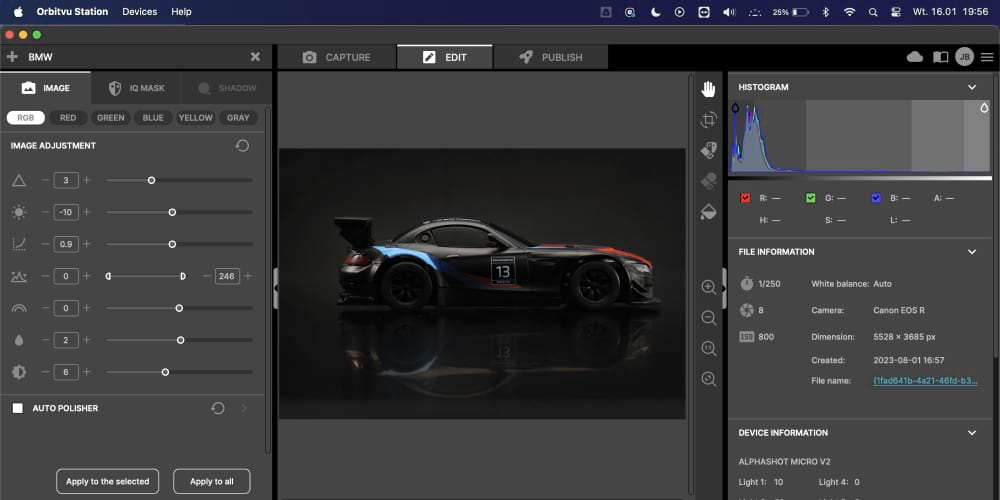
Conclusion
As we conclude our exploration of black background photography, it's clear that this technique offers a powerful way to highlight and elevate product presentation. Black backgrounds not only provide a striking contrast that enhances the visual appeal of the product but also allow photographers to control lighting in a creative way.
In the world of product photography, where every detail matters, using black backgrounds stands out as a sophisticated and effective choice. It's a style that not only captures the eye but also conveys the quality and essence of the product, making it a great choice for photographers and marketers alike.
For those looking to elevate their product photography game, Orbitvu is here to guide, support, and innovate. Let's shape the future of e-commerce photography together. Feel free to reach out to learn more about how we can help achieve your goals.
Articles you may also like

On February 28th, 2023, we participated in the prestigious Qoo10 JAPAN - Live Studio event opening in Shibuya, Tokyo. This ex...

In the dynamic world of e-commerce, captivating product imagery can make all the difference. For photographers seeking to ele...

Orbitvu USA is proud to announce that we are again a partner in the next FIN Studio event, this time in Atlanta, Alpharetta. ...






